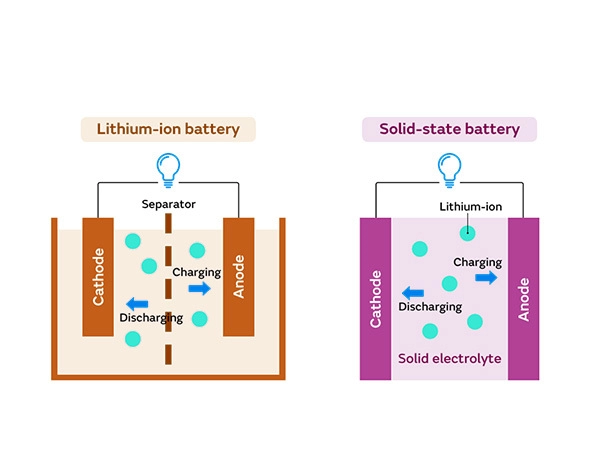Choosing the right battery technology is crucial for optimizing performance, extending lifespan, and improving cost-effectiveness. Lead-carbon batteries and lithium-ion batteries are two of the most common choices. Both have unique characteristics, advantages, and disadvantages, so it is essential to fully understand their applications and performance characteristics before making a choice. This article provides an in-depth comparison to help you choose the option that best suits your needs.

Part 1: What is a Lead-Carbon Battery?
Lead-carbon batteries are an advanced variant of traditional lead-acid batteries. By incorporating carbon materials along with lead oxide into the positive electrode plate, these batteries improve performance and extend lifespan while maintaining the cost-effectiveness of lead-acid technology.
Key Features of Lead-Carbon Batteries
- Longer Cycle Life: Lead-carbon batteries offer up to 2,000 charge and discharge cycles, significantly exceeding traditional lead-acid batteries, which typically last only about 500 cycles.
- Faster Charging Speed: These batteries charge much faster than standard lead-acid batteries, making them ideal for applications that require quick charging.
- Higher Efficiency: The addition of carbon improves overall efficiency, minimizing energy loss during charging and discharging.
- More Economical: Lead-carbon batteries are generally more affordable than lithium-ion batteries, striking a good balance between cost and performance.
Applications of Lead-Carbon Batteries
- Renewable Energy Systems: Their fast charging capabilities make lead-carbon batteries well-suited for solar energy storage, providing effective energy management.
- Uninterruptible Power Supplies (UPS): Commonly used in backup power systems for critical applications such as data centers and hospitals.
- Electric Vehicles (EV): Some manufacturers are exploring the use of lead-carbon batteries in electric vehicles due to their cost-effectiveness and longer cycle life.
Part 2: Introduction to Lithium-Ion Batteries
Lithium-ion batteries are widely used for energy storage due to their high energy density and lightweight design. These batteries use lithium salts in the electrolyte, which allows ions to move between the anode and cathode during charging and discharging.
Key Features of Lithium-Ion Batteries
- High Energy Density: Lithium-ion batteries can store more energy in a smaller space compared to lead-carbon batteries. They typically offer an energy density of 150-250 Wh/kg, while lead-carbon batteries range from 30-50 Wh/kg.
- Long Cycle Life: With proper maintenance, lithium-ion batteries can last up to 5,000 cycles, making them ideal for long-term use.
- Lightweight Construction: Their compact design makes them suitable for portable devices like smartphones, laptops, and electric vehicles.
- Low Self-Discharge Rate: Compared to lead-acid batteries, lithium-ion batteries have a lower self-discharge rate when idle, which is essential for applications requiring long-term storage.
Applications of Lithium-Ion Batteries
- Consumer Electronics: Lithium-ion batteries are widely used due to their lightweight nature and high energy density. They are common in smartphones, tablets, laptops, and other portable devices.
- Electric Vehicles (EV): Lithium-ion batteries are the preferred choice for most electric vehicles, providing a longer driving range on a single charge.
- Energy Storage Systems: Lithium-ion batteries are increasingly used in home energy storage systems, especially when combined with renewable energy sources such as solar power.
Part 3: Comprehensive Comparison of Lead-Carbon and Lithium-Ion Batteries
When comparing lead-carbon and lithium-ion batteries, there are several key factors to consider, such as performance, cost, safety, and environmental impact. In this section, we will analyze these aspects to provide you with a clear understanding of the differences.
Performance Parameters
Energy Density:
- Lead-Carbon Batteries: Lead-carbon batteries have an energy density of 30-50 Wh/kg, which means they have a moderate energy storage capacity relative to their weight.
- Lithium-Ion Batteries: On the other hand, lithium-ion batteries have a much higher energy density, ranging from 150-250 Wh/kg. This allows them to store more energy for a given weight.
[Comparison based on other factors to be continued here…]
For a deeper dive into energy storage technologies and how they compare, browse our Comprehensive Comparison of AGM and Lithium-Ion Batteries.
Okay, I understand. Please provide the English text you want me to translate into Chinese, along with your initial Chinese translation. Once I’ve reviewed the text, I will provide constructive criticism and suggestions for improvement. I will only provide the Chinese translation, and I will preserve all HTML tags and attributes.
Lawn Mower Performance: Achieve Excellence!
Keep your lawn mower in top condition with expert tips and maintenance advice. Learn how to ensure your machine lasts for years to come.
Deep Cycle Battery Charging: A Practical Guide
Deep cycle battery charging doesn’t have to be complicated! Our guide simplifies the process, giving you best practices for safe and effective charging.
Battery Packs vs. Individual Batteries: Which Meets Your Energy Needs?
Explore the differences between battery packs and individual battery setups. Weigh the pros and cons of each to decide which option best suits your energy needs.
What is a Battery Pack?
A battery pack consists of multiple batteries connected together, designed to provide reliable and consistent power. Discover its types, benefits, and optimal applications.
Growth Trends in the Flexible Thin-Film and Printed Battery Market
The flexible thin-film and printed battery market is experiencing rapid growth. This article highlights the latest growth trends, innovations, challenges, and future directions of these cutting-edge technologies.







